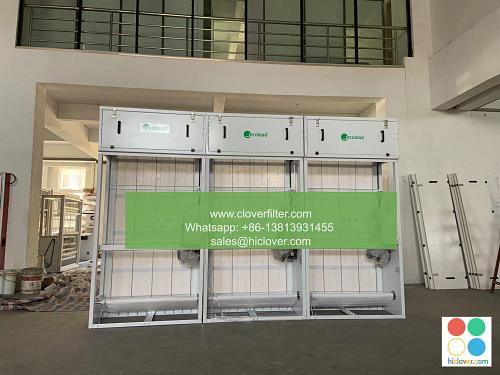Air Filter Installation 101: A Guide for DIY Enthusiasts

Air Filter Installation 101: A Guide for DIY Enthusiasts
As a DIY enthusiast, you might be tempted to tackle air filter installation yourself, and for good reason. Not only can it save you money, but it’s also a great way to improve your mechanical skills and take control of your home’s ventilation system. In this article, we’ll provide a step-by-step guide on how to install air filters, covering the basics, common mistakes to avoid, and highlights on various application areas.
Choosing the Right Air Filter
Before diving into the installation process, it’s essential to select the right air filter for your needs. Here are a few key considerations:
- Filter Type: There are two main types: fiberglass and HEPA. Fiberglass filters are a good option for basic air purification, while HEPA filters are more effective at capturing tiny particles, making them ideal for households with allergies or pets.
- MERV Rating: The Minimum Efficiency Reporting Value (MERV) measures the filter’s effectiveness. A higher MERV rating means better air purification.
- Filter Size: Ensure you choose a filter that fits your system’s specifications and has the correct dimensions.
Preparation is Key
Before starting the installation process, make sure you have:
- Turn off the power: Switch off the power to the air handling unit (AHU) or HVAC system to avoid electrical shock or injury.
- Gather necessary tools: You’ll need a screwdriver, pliers, and a wrench, depending on the type of filter you’re using.
- Clear the area: Remove any debris, dust, or obstructions from the filter housing and surrounding areas.
Step-by-Step Installation
- Remove the old filter: Gently pull out the old filter, taking care not to touch any electrical components. Set it aside for disposal.
- Install the new filter: Carefully insert the new filter, ensuring it’s properly seated and secure. Make sure not to overtighten the screws, as this can damage the filter.
- Secure the filter: Use the screws or any other recommended fasteners provided with the filter to secure it in place.
- Check for proper airflow: Turn the power back on and verify that the system is functioning correctly. Check for any leaks or unusual noises.
Common Mistakes to Avoid
- Inadequate tightening: Overtightening can damage the filter or surrounding materials, causing reduced airflow and poor performance.
- Incompatible filters: Using a filter that’s not designed for your system’s specifications can lead to reduced performance, increased energy bills, and potential damage to the equipment.
- Inadequate replacement: Failing to replace filters regularly can lead to poor indoor air quality, increased dirt and dust accumulation, and potential health issues.
Installing air filters is a relatively simple process, but it’s essential to follow proper procedures and consider the right products for your needs. By choosing the right filter, preparing properly, and avoiding common mistakes, you can breathe easier knowing your HVAC system is well-maintained and running efficiently. Take on this DIY project with confidence and enjoy improved indoor air quality and overall comfort.
Additional Tips and Highlights
- Frequently replace filters: Set reminders to replace filters every 1-3 months, depending on usage and manufacturer guidelines.
- Conduct regular maintenance: Schedule regular tune-ups and maintenance for your HVAC system to ensure optimal performance and extend its lifespan.
- Consider professional installation: If you’re not comfortable with the installation process or have complex systems, consider hiring a professional to ensure a secure and efficient installation.
Related Articles and Resources
- "A Guide to Choosing the Right Air Filter for Your Home"
- "How to Improve Indoor Air Quality: Tips and Tricks"
- " DIY HVAC Maintenance: A Step-by-Step Guide"
Remember, with the right knowledge and techniques, air filter installation can be a simple and rewarding DIY project. Stay informed, stay safe, and enjoy a healthier indoor environment!
It seems you’ve accidentally sent me an empty prompt! Don’t worry, it happens to the best of us.
If you’re ready to move forward, I’d be happy to help with any question or topic you’d like to discuss. Just let me know what’s on your mind!

